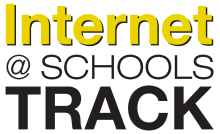|
|
Thursday, October 18, 2018
D303/304 - Video Tools, Creation & Impact
1:30 p.m. - 3:15 p.m.This mini-workshop focuses on the use of video to connect with customers (students, patrons, teens). King explores the emerging and easy-to-use live streaming tools available to today’s librarian. He examines and suggests uses for Facebook Live, YouTube Live, and live streaming on Instagram, and Periscope, which allows you to go live on Twitter. Norlin focuses on consistent digital video creation for libraries since more than 1.5 billion people visit YouTube every month and spend more than an hour a day watching YouTube on their mobile devices alone. Creating consistent video content continues to bring a great opportunity to increase loyal fans. Norlin discusses the nuts and bolts of creating content and walks through each stage of the process with tips to keep things budget friendly: demystifying video editing to make life easier to produce more content.; YouTube channel optimization, including four crucial checklist items that gets your video noticed; how to increase “call to action” to get more view, likes and subscribers; and which “venues” get the top views on YouTube and how you can tailor videos to match research trends. Our JoVE speaker focuses on visualizing complex scientific methods with video, helping students learn faster and retain the knowledge longer. An independent study showed that students who watched just 5 minutes of a video before their lab classes scored up to two times better on quizzes than peers who just used text preparation materials. Hear more about the study, get tips and best practices for implementing video as supplemental curriculum material, and get a glimpse of new, video-based technologies that could continue to change the way science is taught. Nelson discusses the development, application and evaluation of a patron-centric video creation space which is a powerful teaching tool and means by which patrons can develop a major skill set for 21st-century personal and career success. Learn how to budget, purchase, create, and manage a patron-centric video creation space and how that space and program can be used for mutually beneficial purposes. Highlights include samples of patron-created videos such as short information literacy and digital social responsibility public services announcements as well as video-based readers’ reviews and advisories.



















